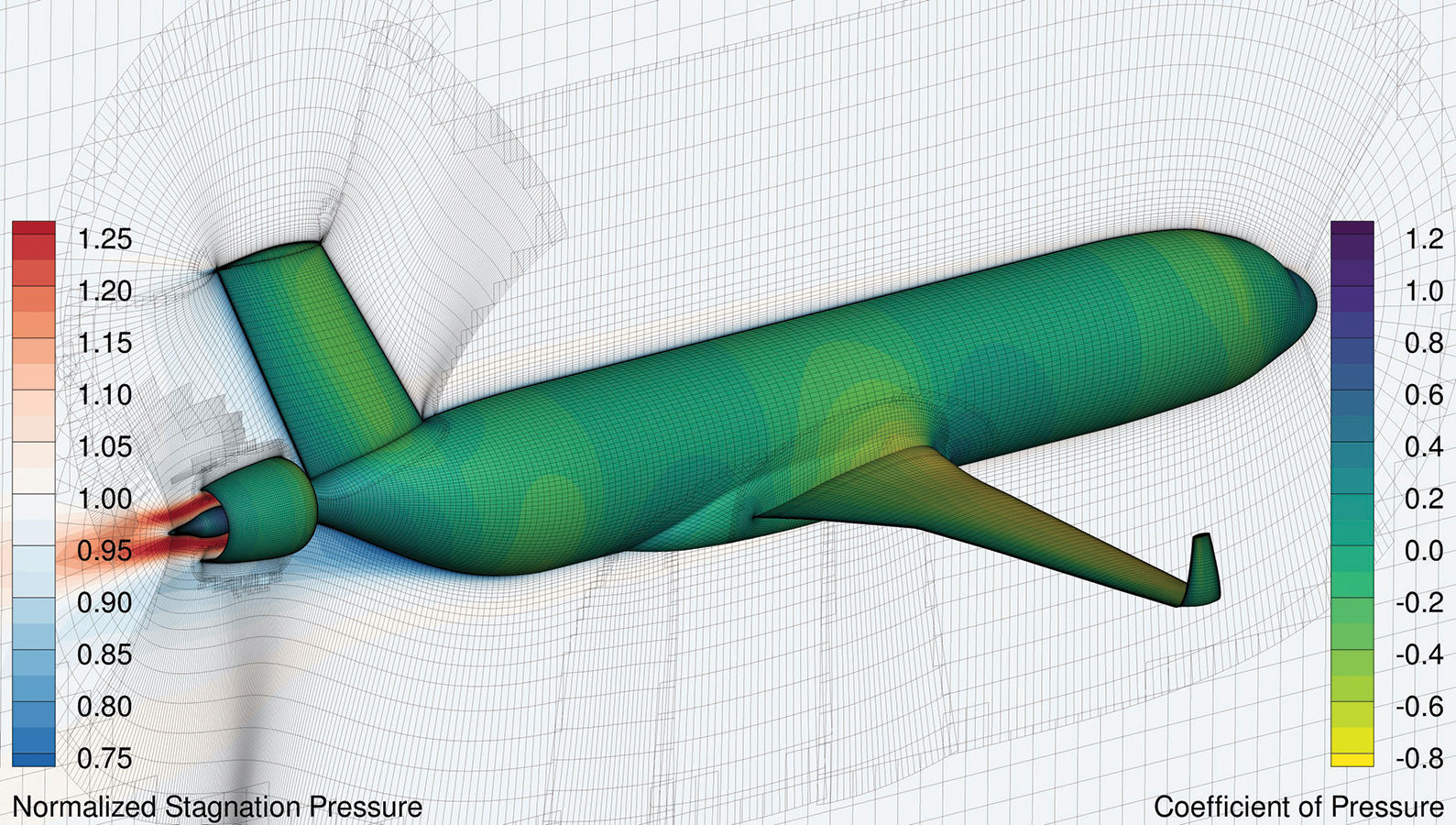Stay Up to Date
Submit your email address to receive the latest industry and Aerospace America news.
The Multidisciplinary Design Optimization Technical Committee provides a forum for those active in development, application and teaching of a formal design methodology based on the integration of disciplinary analyses and sensitivity analyses, optimization and artificial intelligence.
The year saw important advancements at the intersections of multidisciplinary design optimization and machine learning.
In January, the University of Central Florida released an open-source implementation of physics-informed neural networks. The work extends recurrent neural networks to cumulative damage models and empowers users to merge physics-informed and data-driven layers within one deep neural network.
In March, the University of Michigan MDO Lab made available its suite of tools for aerodynamic shape optimization, MACH-Aero, with two different computational fluid dynamics solvers, ADflow and OpenFOAM. The University of Michigan MDO Lab also created Webfoil, an application with airfoil data, analysis and optimization.
In June, the University of California, San Diego, Multiscale Multiphysics Design Optimization Lab released an open-source implementation of efficient large-scale 3D topology optimization for coupled heat transfer and mechanical stress as well as coupled fluid structure interaction. This paves the way to design highly efficient heat-dissipating and load-carrying lightweight aerospace structures.
NASA’s OpenMDAO, an open-source high-performance computing platform for systems analysis and multidisciplinary optimization, V2.8, was released in June. Later in the year, OpenMDAO V2.8 was used to solve a set of first-of-their-kind design optimizations of a boundary layer ingestion propulsor for NASA’s STARC-ABL configuration, short for Single-aisle Turboelectric Aircraft with an Aft Boundary-Layer propulsor. Throughout the year, OpenMDAO was used as a platform to build several new analysis tools and libraries with analytic derivatives. OpenAeroStruct and OpenConcept are aircraft design tools developed by the MDO Lab at the University of Michigan; pyCycle is a propulsion modeling library developed by NASA’s Glenn Research Center in Cleveland; Dymos and Ozone are two ordinary differential equation integration and optimal-control libraries. Dymos was developed by Glenn and Ozone was developed by the Large-Scale Design Optimization Lab at the University of California, San Diego.
The year also saw important advances in system design. In April, there was the first flight of an unmanned vehicle testbed designed and built by a team from the Massachusetts Institute of Technology, University of Texas at Austin, Texas A&M University and Boeing’s Aurora Flight Sciences. The vehicle is being used to demonstrate the use of reduced modeling and machine learning methods for dynamic data-driven mission replanning. The reduced models also form the basis for a digital twin of the vehicle, which MIT is developing with Akselos.
In August, Virginia Tech in collaboration with DK Schmidt and Associates developed approaches to embed dynamics and control of aircraft with highly flexible wings into design environments used to perform multidisciplinary analysis and design optimization of transport aircraft. Researchers demonstrated that bioinspired internal structural layout using curvilinear spars and ribs could reduce the structural weight for composite flying-wing aircraft.
Also in August, in collaboration with ISAE-SUPAERO and MIT, NASA’s Goddard Space Flight Center in Maryland completed the structural analysis module of a multidisciplinary design optimization framework. This framework was applied to the analysis of the James Webb Space Telescope where it was demonstrated that a multifidelity approach can drastically reduce analysis cycles for global sensitivity analyses.
In June, the Multifidelity Modeling in Support of Design and Uncertainty Quantification workshop brought together 40 researchers and practitioners to discuss multifidelity modeling challenges and opportunities and to highlight the progress of multifidelity methods combining physics-based models and machine learning for design optimization and uncertainty quantification.
Related Posts
Stay Up to Date
Submit your email address to receive the latest industry and Aerospace America news.




